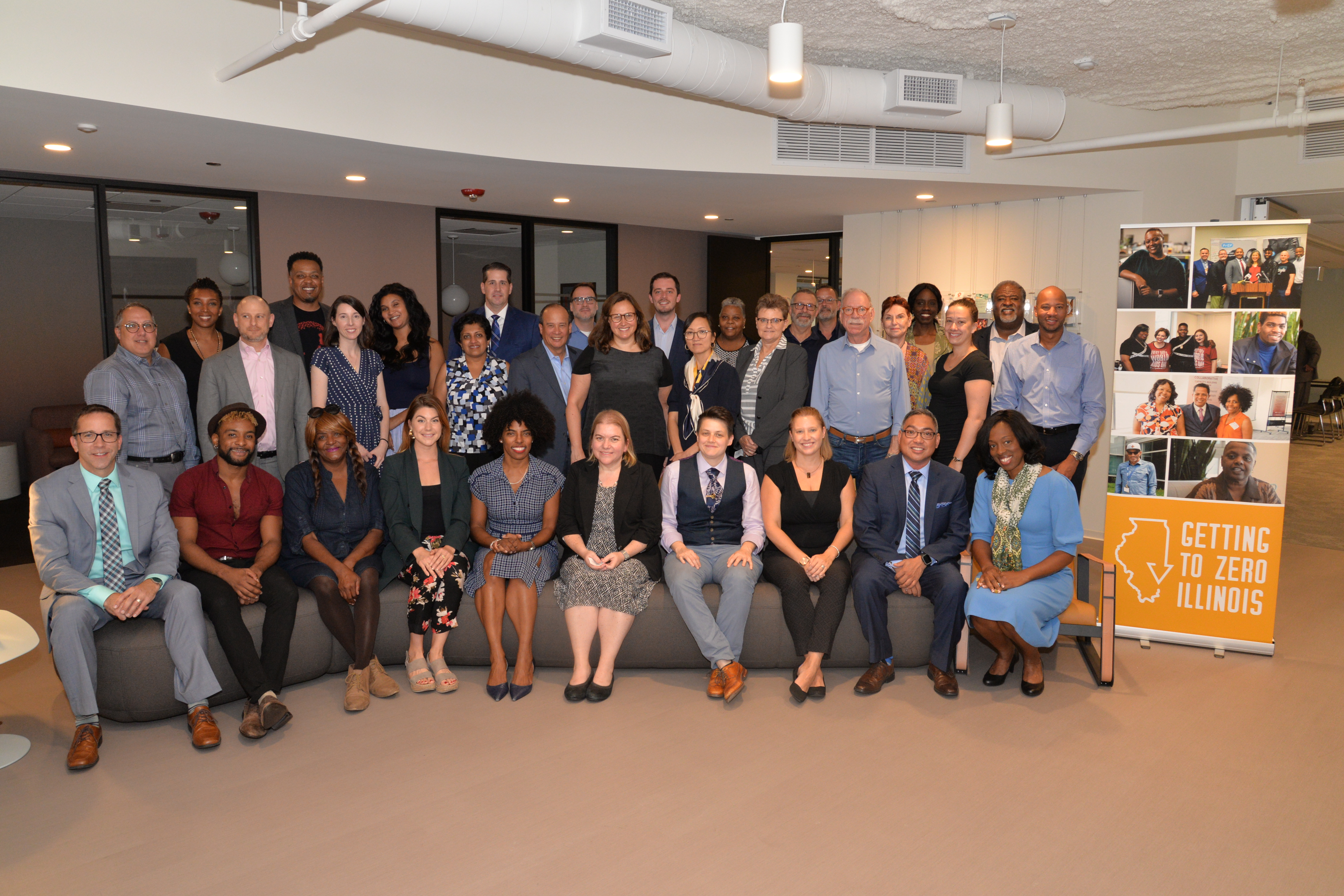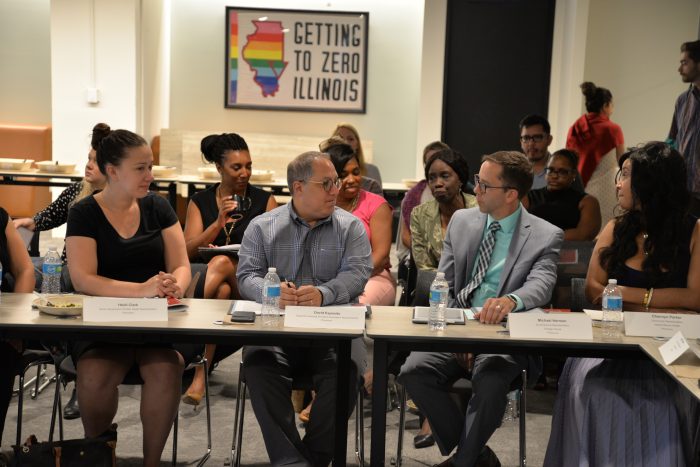
October 4, 2019
GTZ-IL Fall update
Since the official launch of the Getting to Zero Illinois (GTZ-IL) plan in May a number of exciting changes have been happening. One of the biggest shifts has been in the leadership body of the project. During the course of community engagement, collecting feedback, writing and editing the plan, the GTZ-IL Steering Committee was at the helm. The Steering Committee met frequently to create what we now know as the GTZ-IL Plan, and the project owes a great deal of gratitude to this group for their time and expertise.
As GTZ-IL moves into implementation, a new Implementation Council has been tasked with the leadership of the plan. On Thursday, Sept. 19, this group gathered for the first time at the inaugural GTZ-IL Implementation Council meeting. Now, 40 council members representing community-based providers, associations, state and federal agencies, county health departments, legislators, healthcare entities, and other community leaders will provide strategic direction and oversight of plan activities. This body will meeting twice a year in-person, with conference calls between meetings.

One of the major responsibilities of the Implementation Council is strategic direction. In year one, with guidance from the Steering Committee, the Getting to Zero Illinois project has identified 10 of its 78 strategies to become focus areas. These year one focus areas span each of the domains, or WHEELS, of the plan.
Read more about the 10 focus areas below (listed in no particular order).
In the coming months, workgroups for each of these focus areas will be formed. If you would like to receive regular updates about GTZ-IL or would like to join one of the workgroups, please reach out to us at info@gtzillinois.hiv !
2020 GTZ-IL FOCUS AREAS
Focus Area 1: Strengthen peer workforce
Address institutional barriers that prohibit hiring and advancement of peers and increase the number of peers who work for a living wage at all levels of organizations in the health care, public health and community-based HIV sectors. Efforts must focus on elevating Black and Latino/Latinx gay, bisexual, and other MSM; cisgender Black heterosexual women; people of transgender experience; and older adults to leadership positions. (Workforce Strategy 6)
Focus Area 2: Expand HIV testing
Expand health care-based, routine HIV screening tests by 25%. (Health Care Access Strategy 10)
Focus Area 3: Increase PrEP linkages
Increase the percentage of people vulnerable to HIV who are linked to a PrEP prescriber from approximately 21% (~6,500 people) to 50% (~15,000 people. Increase the percentage of people vulnerable to HIV who access PrEP related medical care from 21% (~6,500 people) to 50% (~15,000 people). Ensure that 80% (~12,000) of people vulnerable to HIV who are accessing PrEP-related medical care are prescribed PrEP. (Health Care Access Strategies 13, 15, 17)
Focus Area 4: Deepen cultural humility
Ensure priority communities have access to culturally, linguistically and medically appropriate care and supportive services by creating and integrating standards of equity into existing organizational policies and practices. (Health Equity Strategy 45)
Focus Area 5: Root interventions in evidence-based research
Ensure that the development and implementation of behavioral and clinical interventions for communities experiencing disparities are aligned with root cause analysis findings and are evidence-based. (Health Equity Strategy 47)
Focus Area 6: Build social communities
Decrease loneliness and isolation among priority communities, especially among people living with HIV who are aging and long-term survivors (Health Equity Strategy 59)
Focus Area 7: Integrate health care programs
Integrate GTZ-IL goals, strategies and action steps into the priorities of state programs outside IDPH (such as Illinois Medicaid) that specifically support people living with or vulnerable to HIV as well as state programs that are not HIV-specific (such as Department of Aging). (Efficiency Among Government Agencies Strategy 63)
Focus Area 8: Improve STI screening
Ensure people vulnerable to HIV, with an emphasis on gay, bisexual and other MSM and transgender women of color, are screened for HIV, syphilis, chlamydia and gonorrhea. Ensure all people vulnerable to HIV who are diagnosed with syphilis and/or rectal gonorrhea are linked to PrEP services and counseled about the availability of PEP STI screening for HIV vulnerable pops and STI+ refer for PrEP and PEP. (Linked Conditions Strategies 67 and 70)
Focus Area 9: Assess and monitor our goals
Assess progress of GTZ-IL’s goals by developing a system to allow for monitoring and dissemination of indicators. (Surveillance Strategy 76)
Focus Area 10: Boost ARV usage
Ensure that 80% (~26,000) of people living with HIV who are accessing HIV-related medical care are prescribed ARV medications. (Health Care Access Strategy 16)
Click here to download the PDF version of the 10 focus areas
